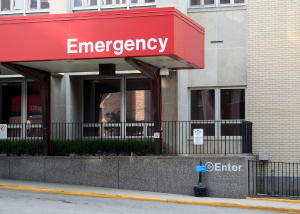-
- 09
Nov - (0)
Social Networking
I have a dim memory that in ancient cyber-times, a number of chat rooms for Alcoholics Anonymous on-line meetings were started on America Online. It was the start of something big.
 I recently read an article in Healthcare Technology about social networking in healthcare, which prompted thoughts about how our field benefits from the phenomenon.
I recently read an article in Healthcare Technology about social networking in healthcare, which prompted thoughts about how our field benefits from the phenomenon.Nowdays we have Facebook, Twitter, and who knows how many general social networks; Linkedin and other services like it cover professional networking, and specialized social networks for other purposes abound. Social media in treatment is intermixed in all this. You can Google “online self help groups” to see the extent of social network availability for people who want to mix electronic communications into their treatment plan.
Friends sharing mental health or addictions problems have ongoing peer conversations; phones light up and Facebook messages help some people get through the day. In New York, The Office of Mental Health and Office of Alcoholism and Substance Abuse Services both have presence on Facebook to keep folks abreast of news and events (search Facebook “Groups” for more information). Professionals like this because it alerts them of free trainings, many available via the Web. Evidently there is value enough in these services to keep people involved…the law of supply and demand being what it is.
How does this enter into the Electronic Health Record (EHR)? You might see references to specific social networking pop up in progress notes, and in some cases as a part of the treatment plan. Because many social networking sites are so wide-open, on-line conversation about mental health and addiction issues potentially blow the cover of folks who would rather remain anonymous. At least one area the EHR shows promise that secure therapeutic social networking of a different sort is on the way.
In order to qualify for Medicare and Medicaid funding that helps pay for technology by demonstrating its effective use, EHRs are compelled to include Patient Portals, which is not far removed from social networking that’s secure. By taking the responsibility vendors can offer technology that enables a patient community password protected technology to help people with like problems network, and that can be a significant part of healing.
Patient portals generally offer a patient access to medication lists with prescription information like expiration dates, or to their scheduled appointments. They often include a communication method to get secure messages to a provider, and other nifty features. A number of hospitals have this technology available for both patients and providers, complete with confidentiality-inspiring security. Everything’s password protected. Very few patient portals are functional in our sector, but at least one manufacturer, Netsmart Technologies, has the technology in place for mental health and addictions.
Once again, the future has arrived.
With all these outlets, the question comes to mind, how many consumers are benefiting from social networking, and what’s the real value in treatment? Another question to address another day.
Read more → - 09
-
- 01
Nov - (0)
The Local News
If people don’t feel included, for the most part, they just don’t bother to be involved at all, and may be quick to notice negatives and pass them around.

That’s why internal Implementation Blogs are becoming keys to increasing “buy in” into IT projects and avoiding disruption to the recovery process. A consumer is generally quite aware of the fact that new software’s being implemented where they receive mental health or addictions care. The activity is obvious, and usually affects every staff member. The consumer sees a different invoice, a different way of scheduling his appointments, and the professionals they work with will begin including them in writing up the summary of a session and the next steps in treatment in progress notes on the computer.
Sometimes the consumer hears about lingering problems with the system that aren’t being addressed. It’s good to avoid airing the dirty laundry like this. Much better to resolve problems that will affect the consumers early and communicating about those problems internally is better than sharing them with the consumers. The consumer comes to treatment to recover, not to hear about software implementation problems.
A few years ago a friend and customer who was implementing an enterprise software system in a Florida Community Mental Health Center (CMHC) shared that she started a blog page to increase staff involvement in the implementation. This accomplished a couple things:
1. Staff reported successes with the software increasing their efficiency and effectiveness in doing their job. 2. Staff complained.
The successes were little testimonials of great impact, and went on the page immediately. This helped people feel involved, like their efforts made a difference, and boosted morale.
If a complaint made it to the page, something needed to be done. It was OK to complain, and staff was coached in how to complain on the blog in such a way that the complaint wouldn’t bring people down and create negative attitudes about the project. Problems are meant to be solved, and any complaints included hope that the problem was temporary and a resolution was on the way. News of effective resolutions made it to the Implementation Blog really quick.
Negative comments were OK, and resulted in attention to the person making that comment. They seldom made it to the blog before the reporting staff edited the comment to show there was some hope, something was being done, or an alternate procedure worked around their problem…in effect, the blog was turning these negative comments into positive action.
I liked this idea and have suggested it in my work many times to folks about to implement software in their mental health or addictions facility. Usually, it’s viewed as one more thing to add to the ever-growing pile of things to do in an environment that’s already short handed. Of those who have instituted the Implementation Blog, Nobody’s wanted to back out. The staff buy-in to the project is much better, simply because staff feels more involved and like what they say counts.
Plus, the consumers heard very few negative comments about the software project, making it that much easier to focus on their own recovery.
Read more → - 01
-
- 26
Oct - (0)
Is it in the Genes?
In a lot of ways, the future has arrived with answers….now if we can figure out what to do with the answers; we may end up in better mental health.

I Googled “gene scans” and the first thing that came up is a company that sells such things, deCODEme. I can give them 2,000 of my hard earned dollars and they promise information to guide my life in areas from heart health to male pattern baldness (too late, check my picture).
A saliva test can tell us a lot about our susceptibility to certain diseases. I had a minor heart attack a few years ago, which may have been averted had I known earlier in life about my genetic leaning toward that problem. Evidently my father’s side of the family is where I inherited the heart disease problem from, and those relatives have remained mysterious and unknown to me. Although we know that sort of thing can “run in the family” I had no clue of a possible heart problem, so a gene scan may have helped me.
A friend didn’t realize diabetes ran in her extended family; perhaps she could have avoided or at least delayed the need for daily injections with a lifestyle change…if she knew of her genetic inclination toward the disease. Nutrition and exercise go a long way in preventing all sorts of physical health problems, and avoiding some foods can improve our immediate mental health. I quit caffeinated coffee and I immediately felt better, less anxious. Perhaps a diet change would have helped my friend.
A genetic test can nudge us toward lifestyle changes that can help us stay physically healthier, but can the test unveil mental health needs? If it can, what changes could I make in my life to avoid mental health problems?
I find the possibility of how this information can fit into our overall health maintenance is terribly interesting, and could augment how mental health professionals treat consumers. It’s a snap to connect a scan of the gene or printed readout of results into the Electronic Health Record (EHR). In the future, this could be a reliable map to help us avoid mental health problems or lessen severity of those problems. Having the genetic clues on the professional’s computer could guide therapy and medication, helping the professional zero in on problems and treatment solutions much more quickly. That sounds like something of value in this fast-paced instant-gratification world.
I can see a future that imports the gene scan results into the EHR, which automatically reads them and posts alerts in a consumer’s record that they may be susceptible to certain conditions like schizophrenia or depression. Other treatment resources within the EHR already suggest medications for certain conditions, and educational resources are all over the Web. Gene scan technology can be brought into treatment technology with a goal of improving diagnosis methods and providing treatment guidance. It’s nice for a professional to have just the information she needs at her fingertips.
Once again, my vision jumps the gun. The National Institute of Mental Health (NIMH) says that we simply don’t yet know how to read the genetic codes and glean information about our mental health. The body of evidence is too small to provide accurate forecasting. Scientists will need to methodically compare a bundle of gene scans for multiple gene patterns in a bundle of people in order to suggest how gene scans can be valuable in forecasting likelihood of mental illness.
Considerable research is under way, so one thing is certain: The future is near.
Read more → - 26
-
- 18
Oct - (0)
Brain Scans: Rocket Science
Some days I forget that life is about reveling in the challenge and working to overcome my problems, and just sulk. I imagine many folks are like this, looking for a quick fix, not wanting to work through daily issues or even long term mental health problems.

Is the promise of brain scans such a quick fix in treating mental health problems? Rapid recovery sounds like a pretty good goal.
Thomas Insel, Director of the National Institute of Mental Health (NIMH) thinks brain scans are akin to rocket science of the 1950’s…not ready for prime time. That said, he does acquiesce that brain scans, have some very promising results. He cites the use of MEG, (magnetoencephalography) as being proven over 90% effective in diagnosing Post Traumatic Stress Disorder (PTSD)…sounds pretty effective to me.
One of the problem professionals and consumers have in mental health treatment is getting the right medications for that person. It would be simpler if everybody responded the same way to a single medication, but that’s not how it is. When NIMH researchers studied a specific MEG signal they were successful in predicting which patients would be served well by a new anti-depressent, ketamine. Since it takes a while for many of these sorts of medications to take efffect, this technology seems to be working now to shorten the time of misery.
Using brain scans to work with mental illness is, at the very least, a great example of how technology is expanding into the field. The scan can be read electronically, so the scan or results of the scan can be ported directly into the secure Electronic Health Record (EHR) of the consumer. This is a good thing in viewing the technology as an outcomes tool.
In mental health and addiction treatment, measuring tools like assessments can show improvement or decline of conditions over a period of time, and with the record at a professional’s fingertips on the computer, the consumer gets better treatment. Changes in a consumer’s condition as treatment progresses helps professionals adjust the course of treatment as it’s needed. Historically, these assessments have been a series of questions with answers and impressions scribbled on a piece of paper. The EHR has helped with legibility and being able to graph assessment results, which provides an easy-to-read format to view progress over time.
Is the brain scan such a tool? Oh, I dunno…as far as I know the scan could be a once-in-a-lifetime event, but I doubt it, simply because everything else changes and technology is still exploding in all areas of healthcare.
It is certain that emerging technologies are aimed at higher quality in diagnosing and treating mental health problems. The assessment tools in the EHR have helped professionals and consumers focus on improving specific conditions. Brain scans appear to be another tool that will be added to the mental health professionals’ toolbox that will help shorten the time to recovery. Insel appears unconvinced of widespread applicability of the tool, so more research is required…but it’s coming. I can foresee widespread use of the technology simply because the consumer wants to get better, faster.
Read more → - 18
-
- 11
Oct - (0)
Nobody Likes to Wait
Average wait time from calling a mental health treatment organization for help and actually engaging in treatment with a professional can take a month. A lot of consumers cancel their appointment or just don’t show up.
 From what I’ve seen, physical health has that beat.
From what I’ve seen, physical health has that beat. David Lloyd of MTM Consulting shared this statistic recently in a talk on the web focused on improving quality; I found that an amazing amount of time to wait for help…Who would wait that long? According to Lloyd’s research, not many folks, and I agree, it’s a long time to wait for health, and I know a lot goes on in my mind in a month.
Regardless of whether the consumers who end up not consuming mental health services are classified as No-Shows or cancellations, or somehow justified as exempt from statistics, the fact is that a bundle of folks aren’t getting help. A key to getting the folks who are now not showing up for appointments is simple business logic. If we serve them quicker, with high quality service, for a reasonable price, they’re more likely to make their appointments. Plus, under these conditions, people improve and tell their friends how great the results of treatment at this particular facility were.
Maintaining quality treatment and delivering it quickly boils down once again to streamlining systems, and the best way I’ve found to assure streamlining happens is to tailor the Electronic Health Record (EHR) to guide clinicians through the treatment and documentation processes. If a professional has clear signposts along the way, the policies and procedures placed to improve quality and timeliness of treatment are more likely to be adhered to. Here are a few things that can be done with the EHR to increase the value of treatment in the long haul that are statistically proven to reduce no-shows and help consumers get better.
• Cut time spent on paperwork and redundant entry of consumer data…who likes to answer the same question six times? An effective EHR can save all data that’s entered one time, like the patient’s name, address, reason for coming, medications, etc, and automatically add it to any form that’s shown in a professional’s workflow where it’s needed; tune up the EHR to do this • Decrease the time a consumer spends waiting for help… Lloyd’s statistics show a lot of professionals are very busy with a lot of peripheral activities like catching up on treatment documentation when there are No-Shows; take scheduling out of the professional’s control, schedule people to come in NOW…or at least within ten days and No-Shows dwindle. • Help the professional! Start Collaborative Documentation now: Involve the consumer in writing assessments, treatment plans and progress notes during the session, with the consumer…it improves focus on treatment goals and objectives and gets the paperwork done on time, reducing a facility’s risk of falling out of compliance with state, and federal governments, helps adhere to accreditation rules, and avoids billing audit problems
I know. That’s all well and good, but who has time to do this?
There will never be enough time to do these three simple things. Facilities will need to hire EHR professionals, spending money they don’t have. The money will come as No-Shows dwindle. There are tons of statistics out there that show how great a tool the EHR can be, and the solutions above are proven to work nationwide, in a ton of studies over many years (I cite them a lot).
Now is a good time to start improving treatment using the EHR to help.
Read more → - 11
-
- 04
Oct - (0)
The EHR: A Recovery Aid?
A bundle of concerns erupt when an agency providing mental health or addiction services implements an Electronic Health Record (EHR). Since the only reason these agencies are in business is to improve the consumer’s well being, a question arises: How can the EHR help improve the quality of consumer care?
 When I work in mental health and addictions treatment facilities, I see just how tough it is for professionals to envision the EHR as a tool to improve consumer focus on recovery. Expanding the vision of professionals, consumers and even the software implementers to view the EHR as a tool to improve treatment is a team effort, and getting the team cranked up can be a trial.
When I work in mental health and addictions treatment facilities, I see just how tough it is for professionals to envision the EHR as a tool to improve consumer focus on recovery. Expanding the vision of professionals, consumers and even the software implementers to view the EHR as a tool to improve treatment is a team effort, and getting the team cranked up can be a trial.If the up-front analysis of how people get their work done and such is solid, a professional implementer should get at least some of the software up and running effectively and quickly, and the benefits to improving consumer care should be evident within weeks of use. Professionals and consumers begin focusing more directly on treatment goals and objectives, which are the reasons folks enter treatment anyway.
All too often staff is overwhelmed by the ever-increasing documentation that’s required in treatment, so they view the software implementation as a burden, an expansion of bureaucracy. The complaint is that with all the required documentation, there’s no time to treat the patient. The EHR solution is to document with the patient during the session. Assessments with a lot of check boxes and radio buttons are easy…just walk through the questions one at a time and review the resulting score with the consumer. Treatment Plans can be more daunting because the fast way to write a goal or objective of treatment is to pick it from a drop down box on the screen, and that can lead to cookie-cutter documentation. Progress Notes generate the same concern.
Collaborative documentation with the patient is the answer, not just because you get paid for the time spent documenting the service. The consumer truly participates in her own treatment when discussing what happened in a session; how it relates to one of her reasons for being in treatment, and what she should be concentrating on in recovery before the next session. Mutual creation of the documents is what draws the patient’s attention to reaching their own treatment goals.
Using the EHR to improve treatment is not a new story. I stumbled onto an article comparing the effectiveness of a simple checklist used in treatment on the computer with a checklist on paper. It’s a short story, and to make it even shorter, a “to-do” list on the computer works darn well. The study says that both mood disorder screenings and treatment documentation improved using the computer maintained task list. The article from Dale Cannon and S Allen of the University of Utah, was ancient, from the year 2000.
A successful EHR depends on a successful implementation and “after-care”, to include continuously gaining buy-in from professionals using the system and making it grow to suit needs better. As these folks embrace central scheduling and treatment documentation with the EHR, the implementation, the effectiveness of the software, and possible improvements in treating patients are likely to increase.
Read more → - 04
-
- 29
Sep - (0)
12%
Hospitals are a center point for the Electronic Health Record (EHR) and a key to the National Health Record’s sharing of health data among treatment teams. Less than 12% of them have effectively implemented software.
 I was mortified to discover this. So shocked and disbelieving, in fact, that I needed corroboration of the original story run in Health Affairs, and found the Robert Wood Johnson Foundation reference that’s linked above.
I was mortified to discover this. So shocked and disbelieving, in fact, that I needed corroboration of the original story run in Health Affairs, and found the Robert Wood Johnson Foundation reference that’s linked above. A hospital has huge Information Technology (IT) resources, and can share data among ancillary specialty clinics, like your psychiatrist, your cardiologist, or your pulmonary specialist. The doctors are associated with the hospitals, and when a patient is released to a doctor’s care, the idea is that the doctor has availability to the electronic records in the hospital, as long as the patient signs a release of information and knows about it. This saves a ton of aggravation in filling out the same information many times, and delivers more accurate treatment data to these members of a consumer’s treatment team.
The combined information is suddenly available in a secure environment, so when the patient moves, or needs to share that health data with somebody not in that hospital’s network, it’s available with a release of information via another component of the National Health Record, the Regional Health Information Organization (RHIO), or other similar health data organization. The RHIOs are all connected into the National Health Record, or will be soon, so our health information is secure behind firewalls and other technological wizardry. The idea is that nobody gets that information without a patient’s say-so, and that when the patient says it’s OK, the data is instantly in the doctor’s hands.
Here’s a scenario. • Joe has a heart problem and a pulmonary problem • Joe also has terrible anxiety that gives him breathing difficulty • Joe goes to the emergency room, and the docs determine the current problem is a panic attack, and Joe’s medicated and released, with instructions to follow up with the psychiatrist’s Mental Health Clinic; the clinic is part of the hospital’s network because the psychiatrist is affiliated with the hospital • Joe goes to the Mental Health Clinic, and the notes, the medication order and the discharge summary from the hospital are available on line, so the psychiatrist knows the details • Later, Joe goes to his cardiologist, who is also affiliated with the hospital and can consult the record of the emergency room visit in the EHR • Ditto with the pulmonologist
Access to that record and the ability to treat the patient as a team, making sure all bases are covered so Joe not only doesn’t die, and also has the highest quality life possible, isn’t possible in 88% of the hospital service areas across the nation.
With only 12% of the hospitals effectively implemented, the National Health Record, which was mandated to be operational in a few years by then-president Bush, is essentially nowhere.
I’ve reported on the value of Rapid Cycle Implementation in getting an EHR up and running as quickly as possible. This method of solving the highest-priority problems that the software can address with target groups of professionals, then rolling out those features to all users, is nothing new…and it’s effective. Soon enough, the organization has a functional EHR and is fine-tuning it, making those features that are already rolled out better. I wonder how many of the 88% of the hospitals without effective EHRs are incorporating Rapid Cycle Implementation into their software rollout.
There are many reasons software implementations fail. It could be that the CEO isn’t promoting it with the staff effectively. It could be that the team doing the implementation is more interested in keeping good statistics on how much money’s been spent on manpower than actually getting a feature rolled out. Resources (usually people) could be in such short supply that the project is sabotaged.
In these failings are the keys to successful implementations. Setbacks are unavoidable, but I’d call this failure.
12%. Sheesh.
Read more → - 29
-
- 21
Sep - (0)
Telemental Health
A friend insisted that I come to Baltimore to visit during an upcoming American Telemedicine Association conference. The conference is for pediatricians. I’m all about mental health and substance abuse technology. So why am I going?
 According to the US Human Resources Service Administration (HRSA), New York has enacted legislation for Medicaid to pay for telemedicine solutions in Mental Health. It only makes sense for me to learn a little more about the solution.
According to the US Human Resources Service Administration (HRSA), New York has enacted legislation for Medicaid to pay for telemedicine solutions in Mental Health. It only makes sense for me to learn a little more about the solution.At least one program, Project Teach, currently includes telephone interviews for psychopharmacologic concerns. The program is an example of how the state’s Office of Mental Health is making good on the promise in the 2010 statewide plan to extend technology in mental health. Presumably, if New York is using telemedicine as a technological strategy to decrease the “burden of illness”, other states must be on the same beam, and evidence I’ve seen shows New York is not in the lead in paying for expanding the technology.
An earlier research foray into telemedicine in mental health yielded a little knowledge on its use, and the first thing that usually comes up is that it’s a solution for “rural and underserved communities”. This friend I mentioned earlier said “what about the woman who lives in Queens, has a job there, and has to take a bus and two subway trains to get to her therapist in Manhattan?” Telemedicine seems a great way for her to work with her current therapist without having to take a lot of time off work.
The elements of telemedicine for mental health are pretty simple, really: Mental health services using live, interactive videoconferencing doesn’t require tremendously expensive equipment. Some finesse is involved, like good lighting and camera angles to help with the feel of a professional environment, however, the technical requirements are available to most people. At the beginning of the year I bought a Netbook computer for $400, and there’s a camera for videoconferencing. This seems like a pretty low-cost solution for rural use and for the woman who lives in Queens.
As long as there is a two-way video and voice communication between professional and consumer, a number of sessions, like visits to review medication effectiveness can easily be remote events and are worth paying for…and that’s good for business in your local Community Mental Health Center.
So, there is value to telemedicine in mental health. I can’t help but feel there’s more we can do with the technology, medication review can’t be the only service worth paying for. What about an individual therapy session? What about the use of social networks like Facebook for a sort of group therapy? Or actual group therapy with people connected via a teleconferencing service. If the value exists, then it’s worth paying for. It’s easy for a business man to see the value of how this technology can lower costs and increase productivity. Are insurance companies and Medicaid coming to realize the value of telemedicine in general practice of improving our mental health?
That’s why I’m going to the conference, and I’ll keep you posted.
Read more → - 21
-
- 14
Sep - (0)
Better Business and Treatment with the EHR
When the business of treatment gets better with the use of the Electronic Health Record (EHR), consumers get better.
 These days, ePrescribing sends a prescription directly from the prescriber to our pharmacies. Mistakes made in simple medication prescriptions have been more commonplace in the past than we would like to admit, and ePrescribing is sending legible prescriptions to pharmacists which can only help reduce mistakes. Another benefit of ePrescribing is the incredible storehouse of data that is building nationwide and can be used in studies to improve professionals’ treatment of consumers.
These days, ePrescribing sends a prescription directly from the prescriber to our pharmacies. Mistakes made in simple medication prescriptions have been more commonplace in the past than we would like to admit, and ePrescribing is sending legible prescriptions to pharmacists which can only help reduce mistakes. Another benefit of ePrescribing is the incredible storehouse of data that is building nationwide and can be used in studies to improve professionals’ treatment of consumers.Due to recent studies of suicide and suicide prevention, we know more about it than we ever have. A recent post from Thomas Insel, Director of the National Institute of Mental Health, quotes statistics gathered from a study of data (mostly gathered and analyzed by computers). Out of 100,000 deaths, 11 are suicide related. Out of 100 people you see walking down the street, one of them has been serious enough about suicide to have a plan. Knowing the depth of the problem is the first step in digging our way out of it.
Medications like Cozapine and Lithium have been proven effective in suicide prevention for specific target groups. Statistics that lead to conclusions of their effectiveness are naturally gathered in the EHR and analyzed on computers. As ePrescribing becomes more widespread, studies like this will become easier to perform, and results will be delivered to the medical community faster.
My peers on Mental Help Net talk about therapies like dialectical behavior therapy and cognitive behavior therapy. Studies show these therapies are effective in significantly reducing repeat attempts at suicide. Because of the data gathered from the studies, psychotherapy like this is increasing in usage.
If you are a consumer and worried about your name being associated as a subject in a study, please, don’t worry. For many years, “de-identified data” has been the source of studies like this…Once again, a little magic provided by the computers of those providing the data from their EHR. Consumers’ personal information never makes it out of the original databases used for the studies.
As new medications are developed and delivered through ePrescribing, more data will become available on the suicide prevention and the effectiveness of these drugs…faster. If mental health professionals know about a consumer’s suicidal thoughts and ideation, medications can be further prescribed, and evidence of their effectiveness (or ineffectiveness) will climb.
New assessments, usually delivered on the computer, deliver scores indicating the likelihood somebody will entertain suicide. These assessments lead to use of new psychotherapy methods in treatment to prevent suicide.
Once again, the EHR does its part.
Read more → - 14
-
- 03
Sep - (0)
EHR Improves Treatment Teamwork
Everybody likes to see results.
How many consumers really have a handle on their progress in treatment? A couple innovations involving the Electronic Health Record (EHR) have received a lot of attention lately, because they work…and that’s backed up by data from the EHR.
 Concurrent or collaborative documentation with the consumer and effective scheduling are perhaps the two most important tools that professionals and consumers can add to their tool box to deliver a clear vision of treatment effectiveness.
Concurrent or collaborative documentation with the consumer and effective scheduling are perhaps the two most important tools that professionals and consumers can add to their tool box to deliver a clear vision of treatment effectiveness.If a counselor cancels an appointment with a consumer, what message does that send? As a consumer, I might get the impression that it’s OK to miss appointments, with or without notice. Either way, missing appointments leads to less concentration on treatment goals and hampered recovery. Gathering data from the electronic central-scheduling module can help analyze who’s canceling appointments, and who’s simply not showing up for appointments. Once we know where the disconnect is, we can discover the reasons and overcome them.
I recently attended a web presentation by Bill Schmeltzer of MTM consulting discussing collaborative documentation (The slides are to be posted at http://www.omh.state.ny.us/omhweb/clinic_restructuring/resources.html), and I liked the approach because it had a focus of improving treatment results. The idea is to jointly recap the session (something most people receiving mental health services are used to) at the end of session, recording what the professional and consumer did together in the session, and how that discussion focused on one of the goals in the treatment plan, as well as any plans for the patient to employ tools like active listening or breathing techniques to improve daily life. Once again, this information will be available in the EHR. When the patient returns, the notes are handy reminders of where the professional and consumer left off; this might be a good place to resume discussions.
In many treatment centers, scheduling has been a topic of heated discussions over professionals’ control of their time. Recently The National Council (the mental health community’s most popular support organization) published a study that compiled data from ten Community Behavioral Health Organizations (CBHOs) that sheds some light on how important scheduling is.
One organization had a counselor with 30 “no-shows” by consumers. That seems like a lot. It certainly affects the bottom line, so agencies want to know more about this, because this consumers weren’t the only ones perpetrating the trend. As it turned out, the counselor didn’t show up for 24 of his appointments…legitimizing the idea of missing appointments. That’s a solid example of a work culture that needs to be changed.
The answer to decreasing no-shows and increasing effectiveness appears to be involving the consumer more in the nuts and bolts of treatment. Collaborative documentation keeps consumers and professionals focused on the goals of treatment, what the consumer actually wants to improve, as opposed to the mini-crisis of the moment. I like that, I learned that most of my crisis’ are bogus anyhow…a result of behaviors I have long-since changed.
One agency I heard about on Long Island hired a scheduling person with a master’s level education. This person was savvy enough to read a chart and consider treatment goals and objectives, as well as no-shows by both the counselor and consumer when scheduling appointments and determining what sorts of effort needed to go into getting the parties together to collaborate on effective treatment. Although the scheduling person was very expensive, filling the position with this type person paid off in the bottom line in reducing no-shows, and therefore paid sessions.
Yes, she used the scheduling module in the EHR to access the information needed to make these decisions, and she couldn’t be effective in the job without the treatment plan, progress notes and scheduling history information in the computer.
So, the foundation of success for both consumers and counselors, and even the treatment facility winds up being all wrapped up in the EHR. I love that.
Read more → - 03
